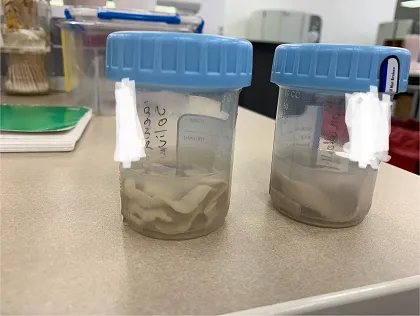If there's one thing the institutions in the US still do all right, it's checking our food products for potential parasites. When we discovered the patient had not one, but two, types of tapeworms, we had questions. It'd be a commentary on our public health system.

On the left, you see the proglottids of Taenia solium. On the right, they are of Diphyllobothrium latum. Tapeworms aren't as common in developed nations. Upon learning that the patient is a refugee from another continent, it was a sigh of relief that our infrastructure is still functioning... for now.
Of the tapeworms, the pork tapeworm (T. solium) is the most prone to complications. The tapeworm has the potential to form cysts in various parts of the body, including the brain. This is due to the parasite being unfamiliar with the human body and choosing to burrow into multiple parts of its host. Why? It's mostly likely due to the similarities between swine and humans.
On the contrary, the fish tapeworm (D. latum) is much less dangerous. Often, the patient is asymptomatic despite having this type of tapeworm. Of course, this worm can steal your B12 and cause you to go anemic over time. Without treatment, D latum can affect an individual for decades compared to several years of the pork kind.
Since we don't see tapeworms often, we decided to preserve them for future students and training. Like I've said before, the more exciting stuff we see in the lab, the worse off the patient is.
Until next time...
Posted using STEMGeeks